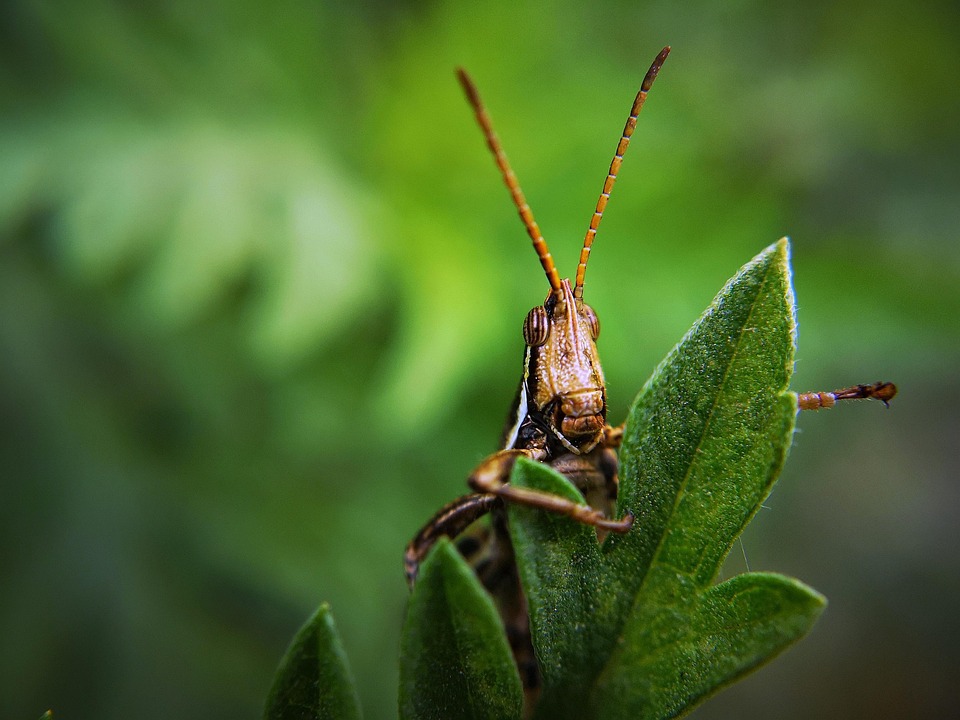Inside the Animal Mind: Exploring Cognition Through Avian Intelligence
Introduction
The realm of animal cognition has long fascinated scientists and laypeople alike. Among the diverse species that populate our planet, birds have emerged as particularly compelling subjects for the study of intelligence. Their remarkable problem-solving abilities, complex social behaviors, and sophisticated communication skills challenge traditional views of animal cognition. As research delves deeper into the avian mind, it becomes increasingly clear that many bird species possess a level of intelligence once thought to be exclusive to primates. This article explores avian cognition, highlighting key studies, theories, and the implications of these findings in understanding intelligence across species.
The Evolution of Avian Intelligence
Birds as Descendants of Dinosaurs
Birds are the last surviving lineage of theropod dinosaurs, demonstrating a remarkable evolutionary journey. This lineage is pertinent to understanding avian intelligence, as it implies that cognitive capabilities may have developed alongside their ancestors’ adaptations for survival, navigation, and social interaction in complex environments. Modern birds exhibit a range of traits such as complex vocalizations, tool use, and social structures, which suggest a parallel evolution of cognitive skills.
The Role of Ecology in Cognitive Development
The environmental challenges faced by birds have significantly influenced their cognitive development. For instance, species that rely on caching food, such as jays and corvids, have demonstrated advanced spatial memory and problem-solving capabilities. This ecological perspective posits that the specific demands of a species’ habitat can drive the evolution of intelligence, leading to diverse cognitive strategies across avian species.
Cognitive Abilities in Birds
Problem-Solving and Tool Use
One of the most striking indicators of intelligence in birds is their ability to solve complex problems and use tools. Research has demonstrated that several bird species, particularly crows and parrots, possess exceptional problem-solving skills.
-
New Caledonian Crows: A prime example is the New Caledonian crow, which has shown the ability to create and use tools to access food. In controlled experiments, these crows have been observed using sticks to extract insects from tree bark, highlighting their understanding of causality and manipulation of their environment.[1]
- African Grey Parrots: African grey parrots are equally impressive, demonstrating advanced tool use and an understanding of object permanence—an ability that suggests a level of cognitive flexibility. Studies have shown that these parrots can choose the appropriate tool from a selection to retrieve food,[2] indicating both problem-solving skill and an understanding of the tools’ functions.
Social Intelligence
Birds are not only capable of individual cognitive feats; they also exhibit complex social behaviors that suggest high levels of social intelligence.
-
Corvids: Corvids, including ravens and magpies, are renowned for their intricate social structures. They can recognize individual human faces and remember antagonistic individuals over long periods. Such social memory is crucial for survival in environments where relationships can determine access to resources[3].
- Budgerigars: Social learning is another significant aspect of avian intelligence. Budgerigars (budgies) can learn from observing the behaviors of their peers, showcasing an ability to adapt their behaviors based on social interactions and cultural transmission of knowledge.[4]
Communication Skills
The communication systems employed by birds are remarkably complex and suggest a sophisticated understanding of social dynamics.
-
Complex Vocalizations: Many bird species utilize varying pitches, rhythms, and sequences in their songs to convey different messages. For instance, songbirds can adjust their calls based on social context, such as attracting mates or warning of predators. This indicates not only the ability to produce diverse sounds but also an understanding of their meanings in different situations.[5]
- Alarm Calls: Research on alarm calling has shown that birds like chickadees can relay specific information about the type of threat present. By altering their calls, they can inform other birds whether danger is near and what kind of predator is in the vicinity, demonstrating a sophisticated understanding of their environment and social roles.[6]
The Neuroscience of Avian Cognition
Brain Structure and Function
Birds exhibit an unexpected level of neural complexity, especially considering their small brain sizes in relation to body weight. The articular changes in brain structure have been linked to their cognitive capabilities.
-
Hyperstriatum: This region of the avian brain is analogous to the mammalian neocortex and is associated with higher-order cognitive functions. Research suggests that the hyperstriatum is crucial for processing complex information, leading to advanced problem-solving abilities.[7]
- Neurogenesis: Birds also exhibit neurogenesis—the growth of new neurons—particularly in hyperstriatum areas associated with learning and memory. This capability allows for adaptability and learning throughout their lives, differentiating them from many mammalian counterparts.[8]
Comparative Neuroscience
Comparative studies between avian and mammalian brains have revealed that similar cognitive functions can arise from different evolutionary paths. This supports the idea that intelligence may not be confined to a single lineage and that cognitive adaptations can emerge in various forms across species.
- Convergent Evolution: For example, the brains of birds and mammals have evolved different but functionally similar neural mechanisms to support complex problem-solving and social interactions. Such convergent evolution emphasizes the adaptability and resourcefulness of intelligence in responding to specific ecological pressures.[9]
Avian Intelligence in Context
Implications for Understanding Animal Cognition
The cognitive capabilities of birds challenge traditional definitions of intelligence and controversial hierarchies of species intelligence. The recognition of complex behaviors in birds demands a reconsideration of the cognitive continuum across the animal kingdom.
- Redefining Intelligence: As we uncover the cognitive skills in birds, they force us to rethink preconceived notions about intelligence being solely linked to brain size or structure. For example, some birds demonstrate innovation, problem-solving, and the ability to plan for the future, traits previously associated mainly with primates and cetaceans.[10]
Ethical Considerations and Conservation
Understanding avian intelligence also has profound implications for conservation and animal welfare. Recognizing the cognitive and emotional capacities of birds can lead to more humane treatment and improved policies regarding their habitats and ecosystems.
- Conservation Strategies: By acknowledging the social structures and intelligence of bird populations, conservation strategies can be tailored to support not merely species survival but also their intricate social dynamics. Awareness of their cognitive abilities reinforces the necessity of preserving habitats that enable natural behaviors and learning opportunities.[11]
Conclusion
The exploration of avian cognition unveils not only the remarkable intelligence of birds but also forces us to reevaluate our understanding of cognition across species. As researchers continue to uncover the depths of the animal mind through studies of bird intelligence, we are reminded that intelligence is multifaceted and can arise in unexpected forms adapted to diverse ecological niches. Ultimately, the study of avian cognition enriches our appreciation of the natural world and underscores the interconnectedness of all living beings.
References
-
Tool Use in New Caledonian Crows: Hunt, G. R., & Gray, R. D. (2003). "Divergence in tool manufacture and use by New Caledonian crows." Nature.
-
African Grey Parrots and Object Permanence: Pepperberg, I. M. (1999). "The Alex Studies: Cognitive and Communicative Abilities of Grey Parrots.” Harvard University Press.
-
Corvids and Social Memory: Boeckle, M., & Pinaud, D. (2017). "Ravens remember the solutions to complex social problems." Nature Communications.
-
Budgerigars and Social Learning: Hopp, S. L., & Vinnedge, L. (2013). "Budgerigars learn vocalizations from social interactions." Animal Cognition.
-
Complex Bird Vocalizations: Catchpole, C. K., & Slater, P. J. B. (2008). "Bird Song: Biological Themes and Variations." Cambridge University Press.
-
Chickadee Alarm Calls: Templeton, C. N., Greene, E., & Davis, K. (2005). "Allomimetics in Chickadee Alarm Calls." Current Biology.
-
Avian Brain Structure: Striedter, G. F. (2005). "Evolution of the Avian Brain." Nature Reviews Neuroscience.
-
Neurogenesis in Birds: Alvarez-Buylla, A., & Garcia-Verdugo, J. M. (2002). "The Pipeline of Neurons." Nature.
-
Comparative Brain Studies: MacLean, E. L., & Hare, B. (2015). "Avian Intelligence and Cognition: A Comparative Perspective." Animal Behavior.
-
Defining Intelligence: Shumaker, R. W., Walkup, K. R., & Beck, B. B. (2011). "Animal Tool Behavior: The Use and Manufacture of Tools by Animals." Johns Hopkins University Press.
- Conservation Strategies: Sutherland, W. J., et al. (2013). "Conservation and the Importance of Ecological Learning." Biological Conservation.
This article underscores the intricacies of avian intelligence and encourages further exploration into the diverse cognitive abilities that exist across the animal kingdom. By studying birds, we not only gain insights into their remarkable lives but also glean a deeper understanding of intelligence itself.


























Add Comment